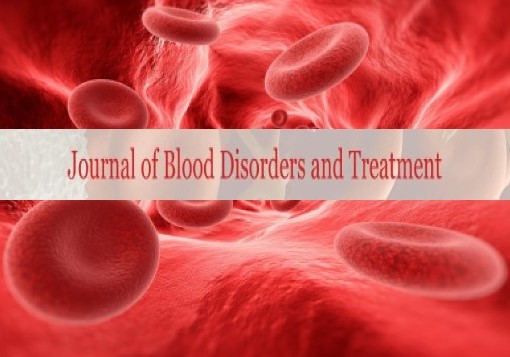
Sign up for email alert when new content gets added: Sign up
Xheni Ngjela, Polikron Pulluqi, Marsela Shani, Elsuarta Calliku
University Medical Center of Tirana "Mother Teresa", Albania
Posters & Accepted Abstracts: J Blood Disord Treat
Background: Disseminated intravascular coagulation is characterised by systemic activation of blood coagulation, which results in generation and deposition of fibrine, leading to microvascular thrombi in various organs and contributing to multiple organ dysfunction syndrome. Derangement of the fibrinolytic system in some cases may cause severe bleeding. In hematologic malignancies DIC is often seen in acute promyelocytic leukemia. There are two main elements in the pathogenesis of DIC caused by APL, hypercoagulability and hyperfibrinolysis. In hypercoagulation the main factors are elevation of TAT and fibrinopeptide A levels. Leukemic cells produce different types of coagulation factors such as tissue factors (TF)CP and microparticles (MPs). The coagulation cascade is activated by TF-factors VIII complex which activates factor X and leads to thrombi formation. Hyperfibrinolysis in patients with APL is explained by hypofibrinogenemia, decreased levels of plasminogen, a2 antiplasmin and plasminogen activator inhibitor 1(PAI 1) One of the most important factors responsible for exaggerated fibrinolysis in these patients is the expression of ANEXIN II and TAFI by leukemic cells.
Study: For this purpose, have been used data provided by the “Mother Teresa University Hospital” Statistical Service and data collected from the register of malignant diseases for the period 2007-2017. A total of 48 cases diagnosed with APL were treated by the hematology service for the years 2007-2017, out of which 22 women (47%) and 26 males (53%). The average age of the affected was 45 years. Clinically they were presented with signs of DIC with hemorrhagic phenomena (metroraghia, epistaxis, petechie, echimosis) and also an increased tendency for bleeding mainly at the sites of manipulation.
Thrombocitopenia, low levels of fibrinogen and PT were the main laboratory findings.2/3 of all APL cases were pancytopenia at the moment of diagnosis.
The treatment is based on immediate beginning of specific chemotherapy (3+7, ATRA) which reduces the leukemic mass leading to DIC improvement. On the other hand, the supportive care was also important. We use fresh frozen plasma, platelets and red blood cells transfusions in order to achive safe levels of fibrinogen (100mg/dl) and platelets (50.000/mm3)
Results: Disseminated intravascular coagulation is characterised by systemic activation of blood coagulation, which results in generation and deposition of fibrine, leading to microvascular thrombi in various organs and contributing to multiple organ dysfunction syndrome. Derangement of the fibrinolytic system in some cases may cause severe bleeding. A total of 48 cases diagnosed with APL were treated by the hematology service for the years 2007-2017, out of which 22 women (47%) and 26 males (53%). The average age of the affected was 45 years. 2/3 of all APL cases were pancytopenia at the moment of diagnosis. The treatment is based on immediate beginning of specific chemotherapy (3+7, ATRA).
E-mail: marselashani17@gmail.com